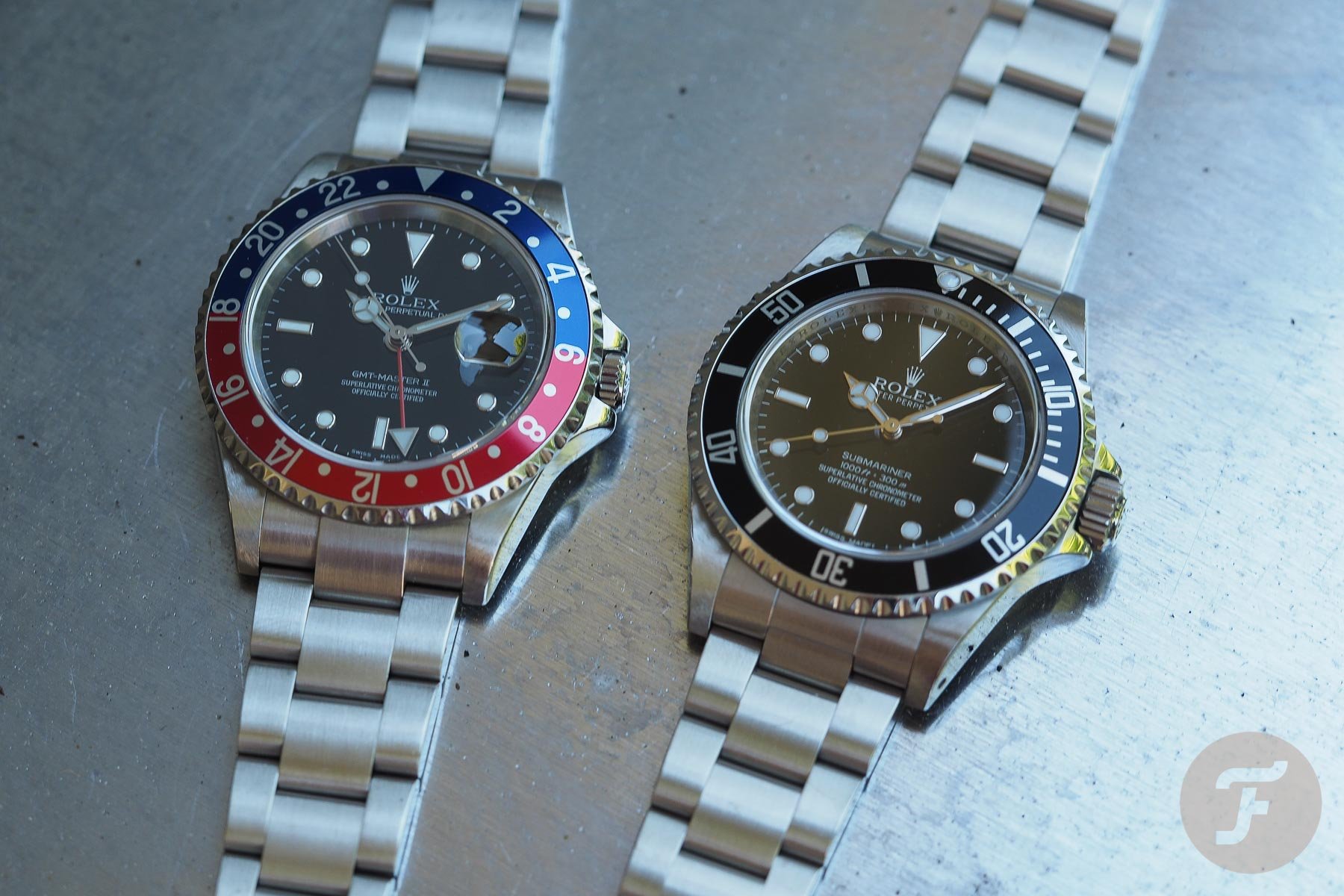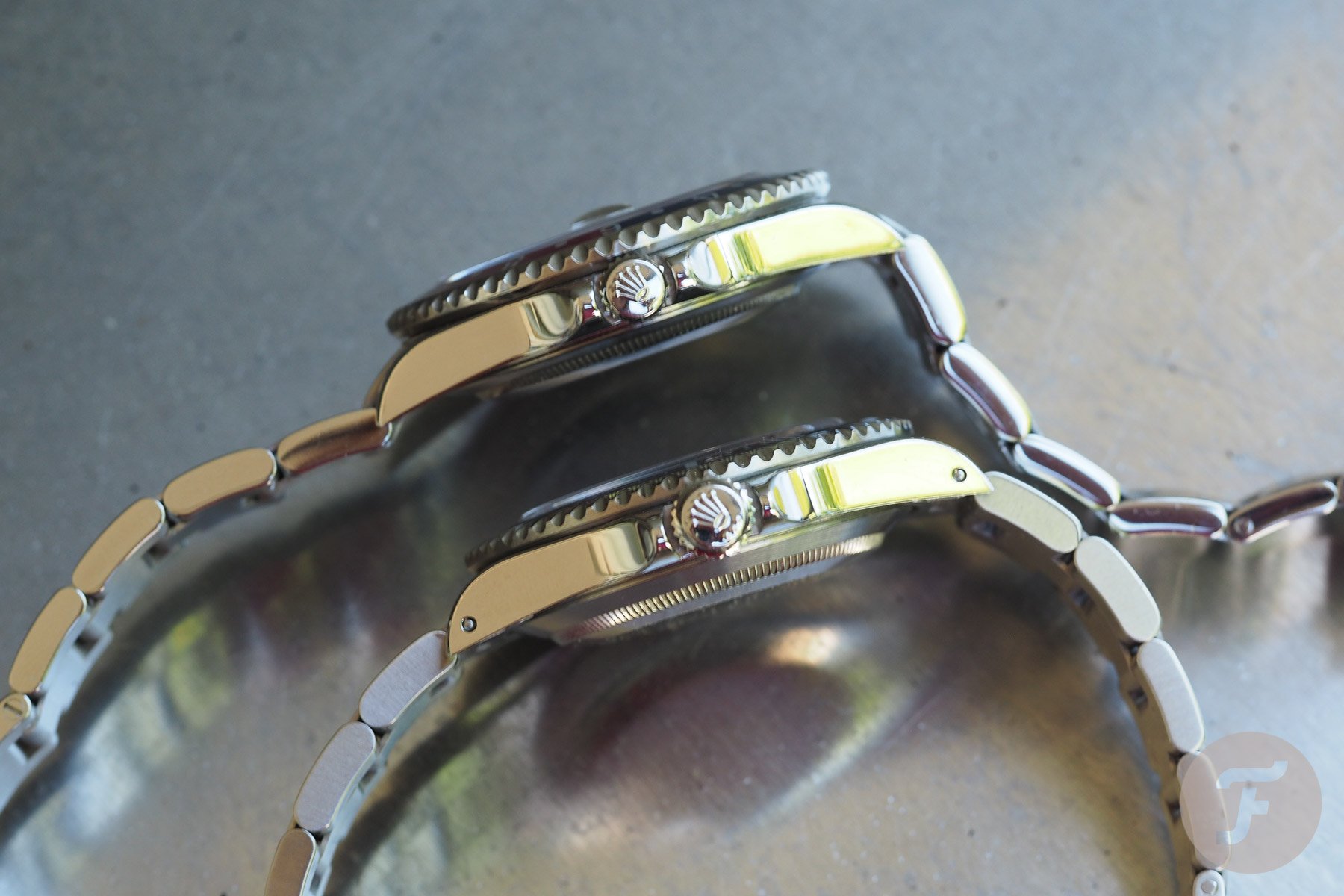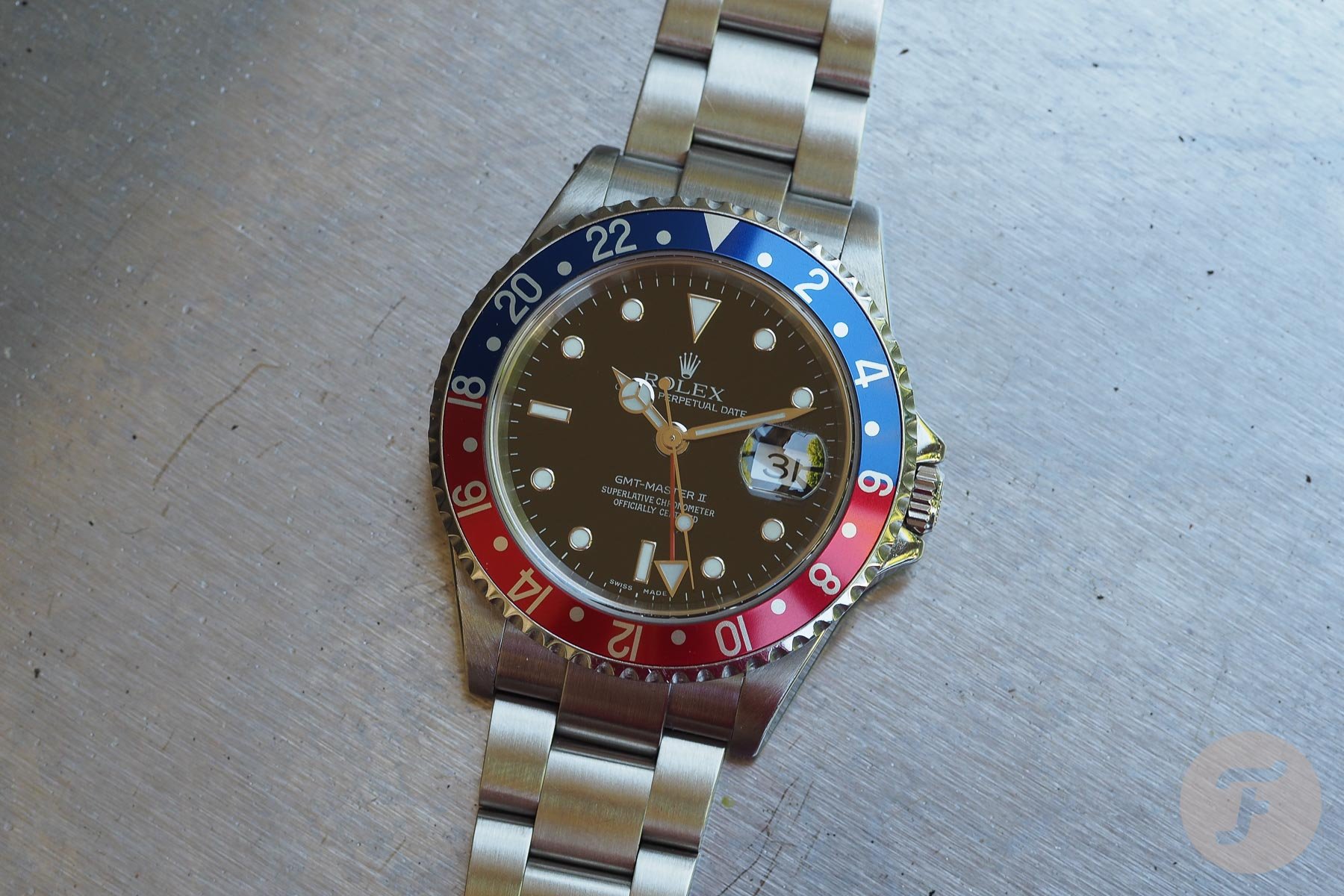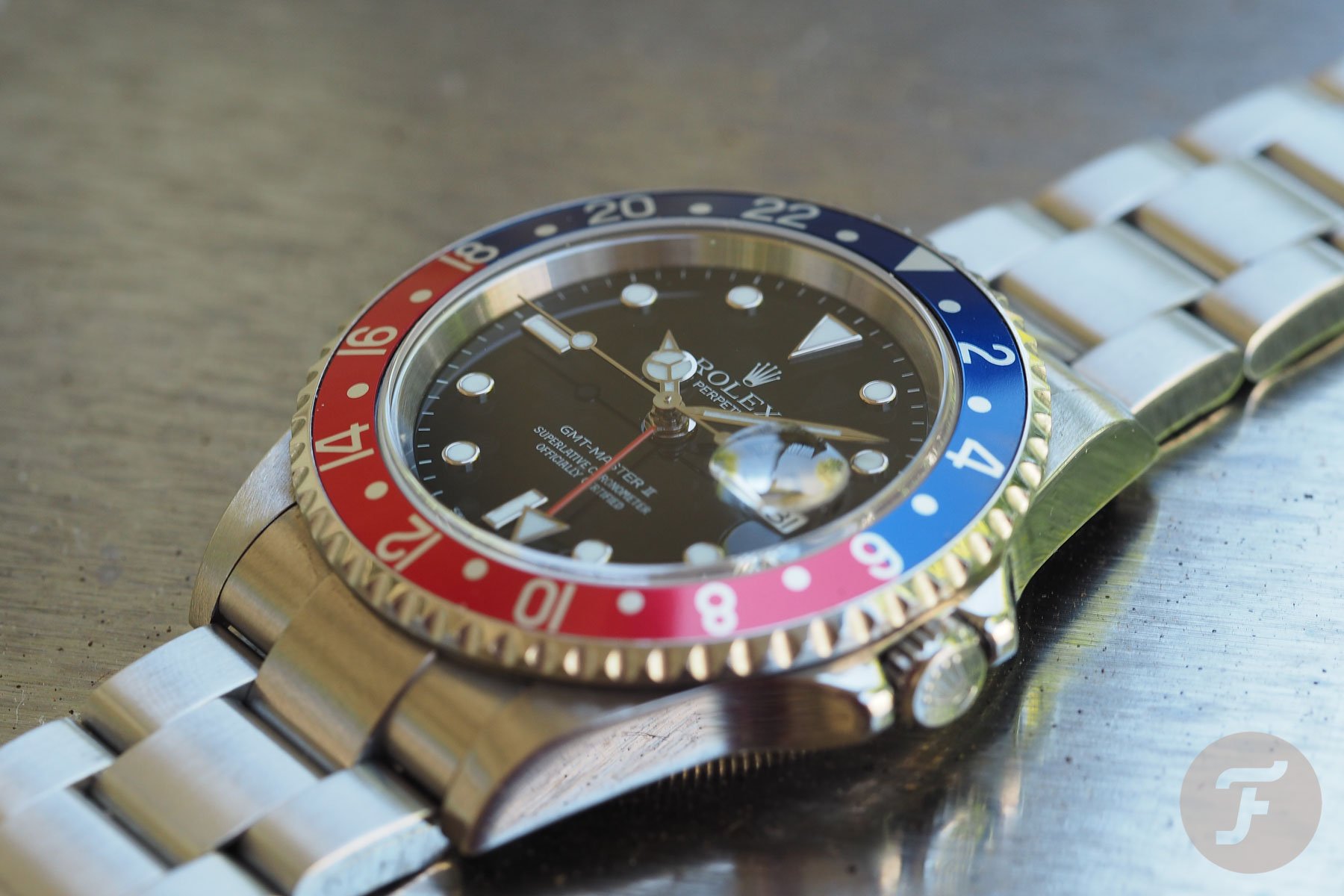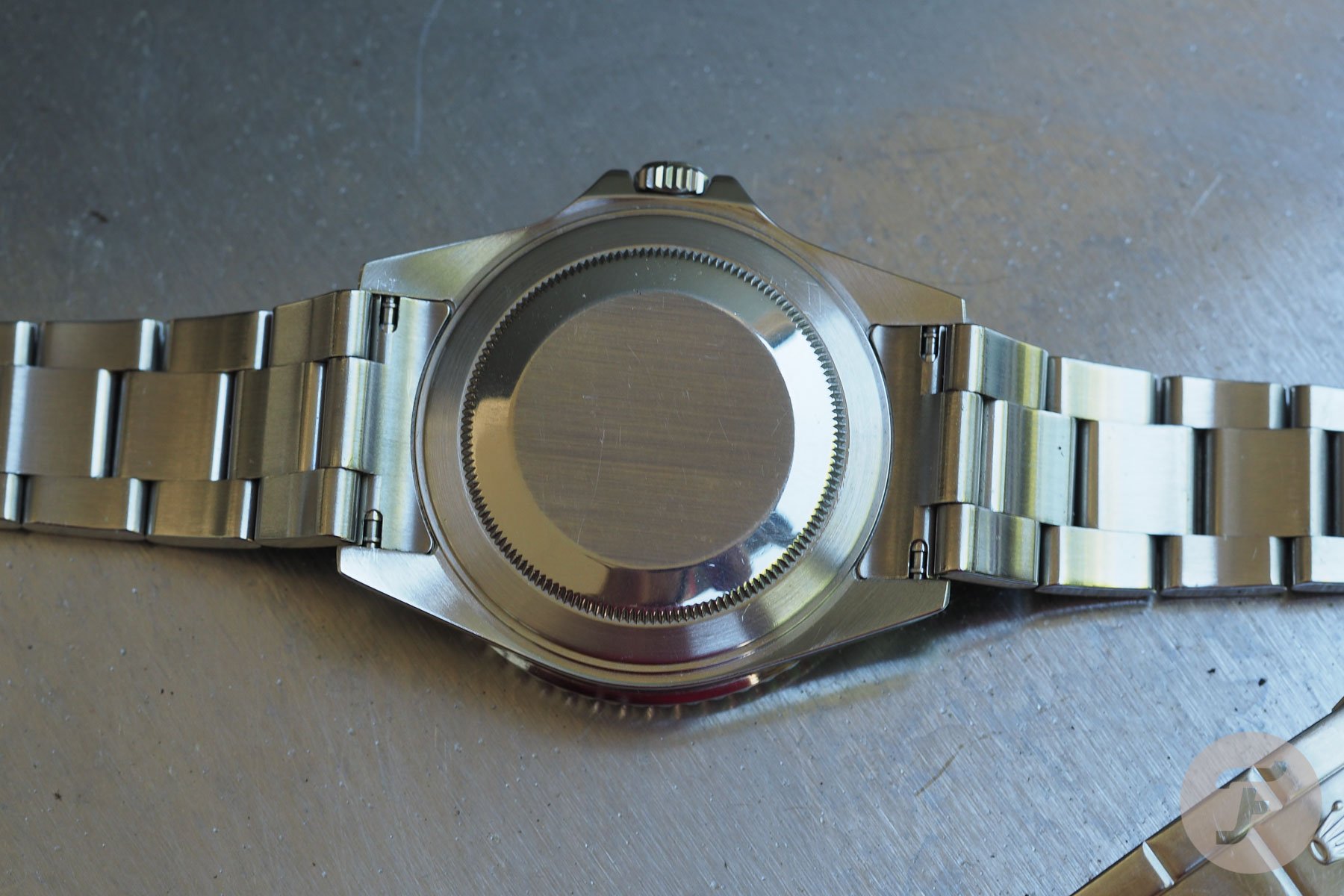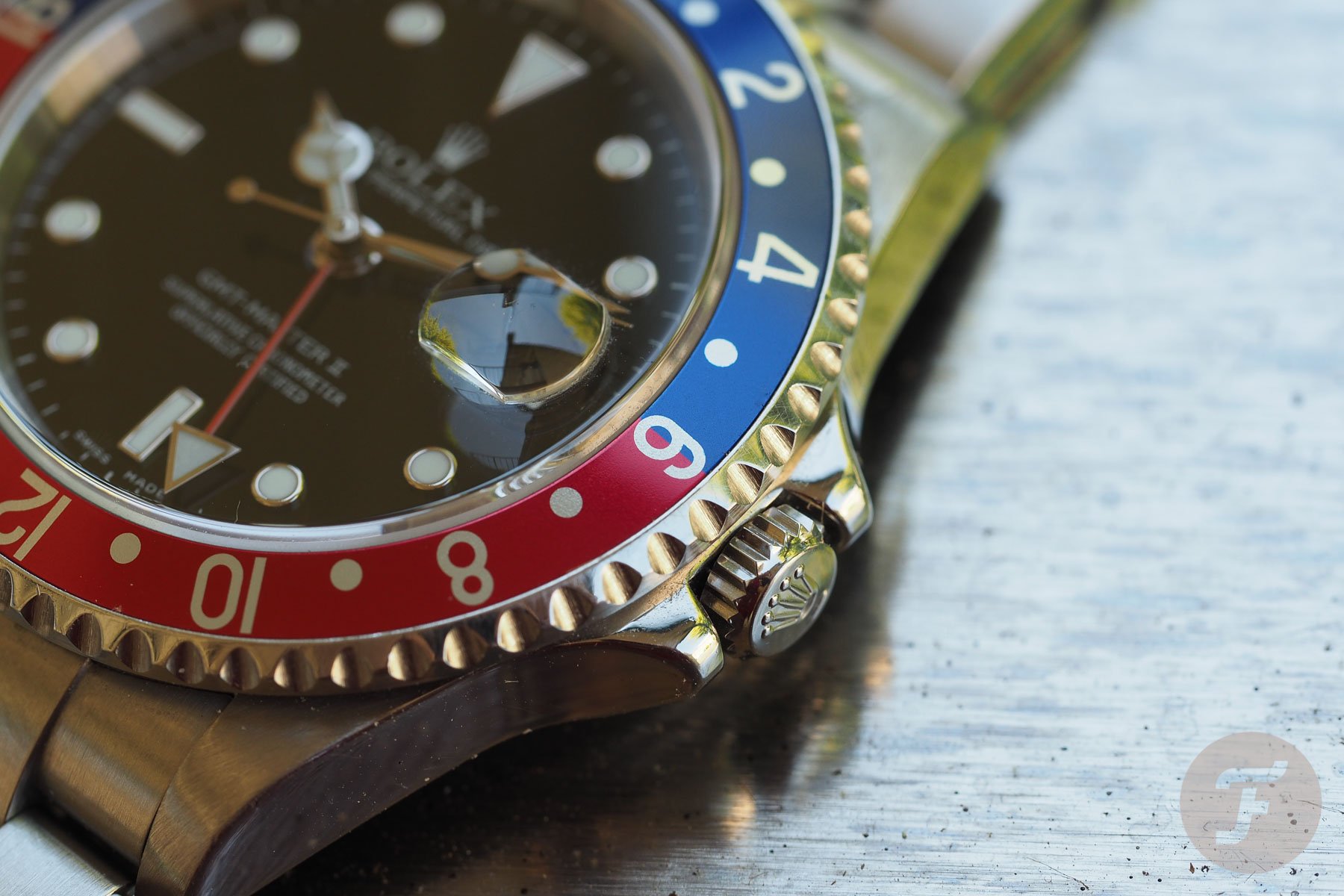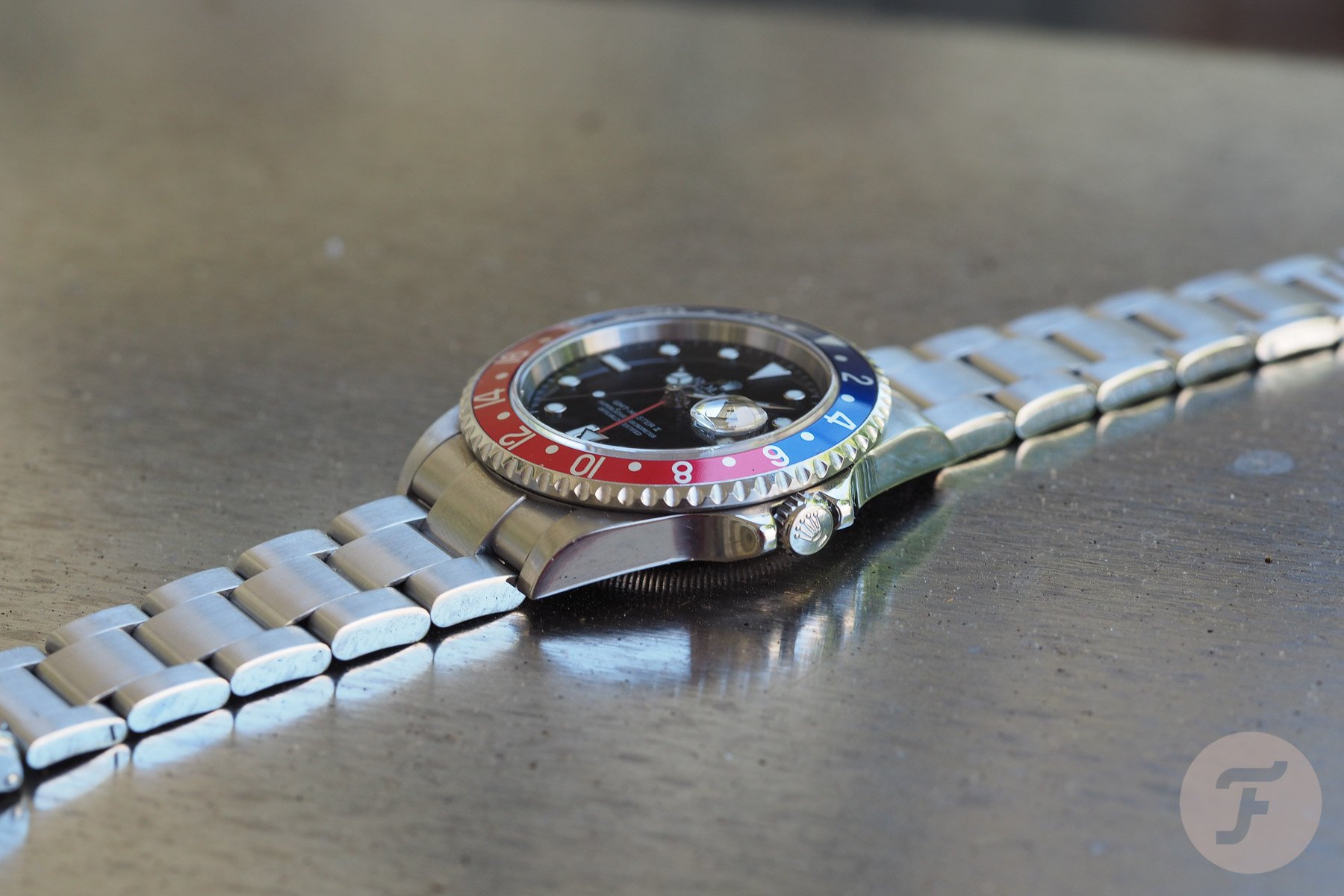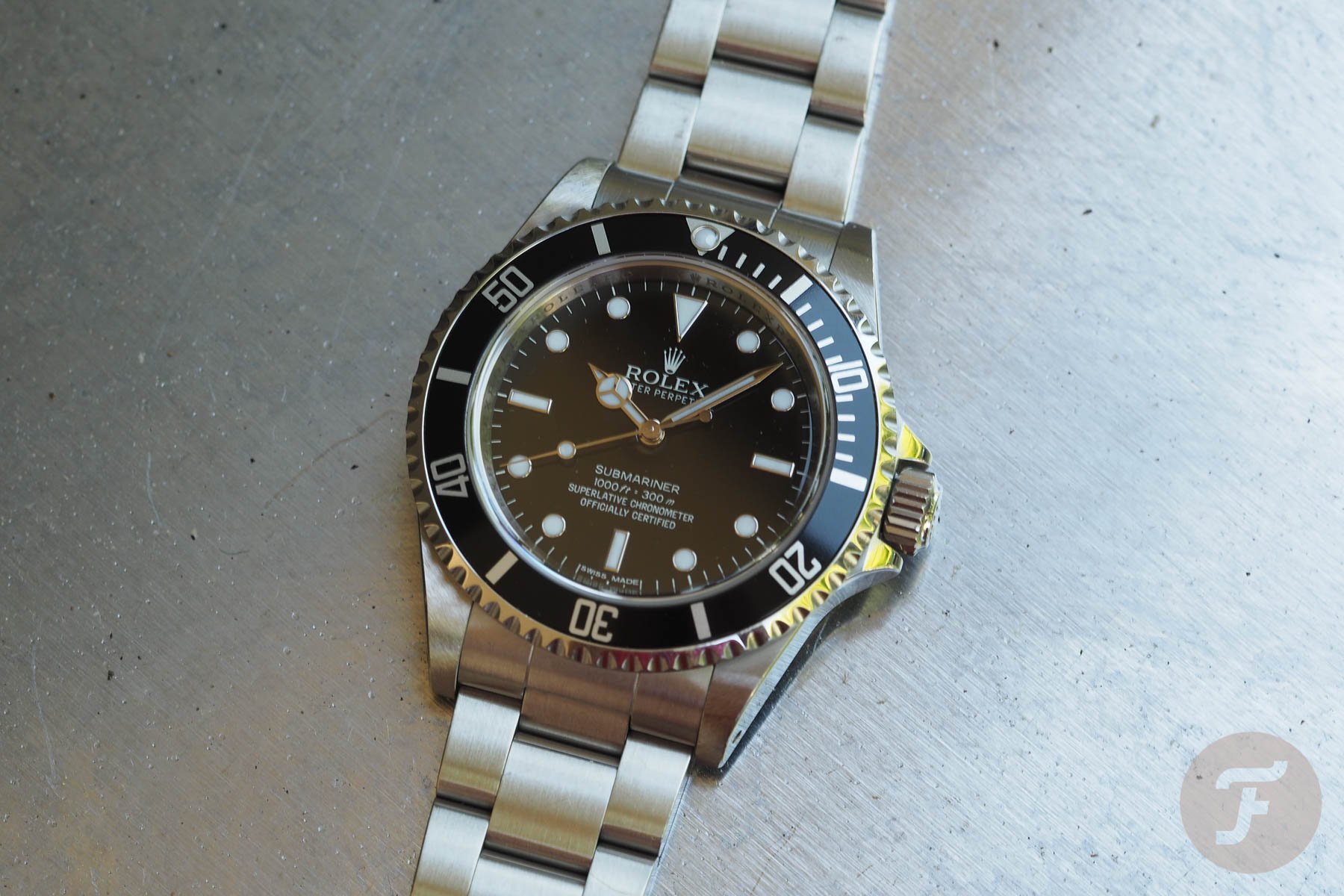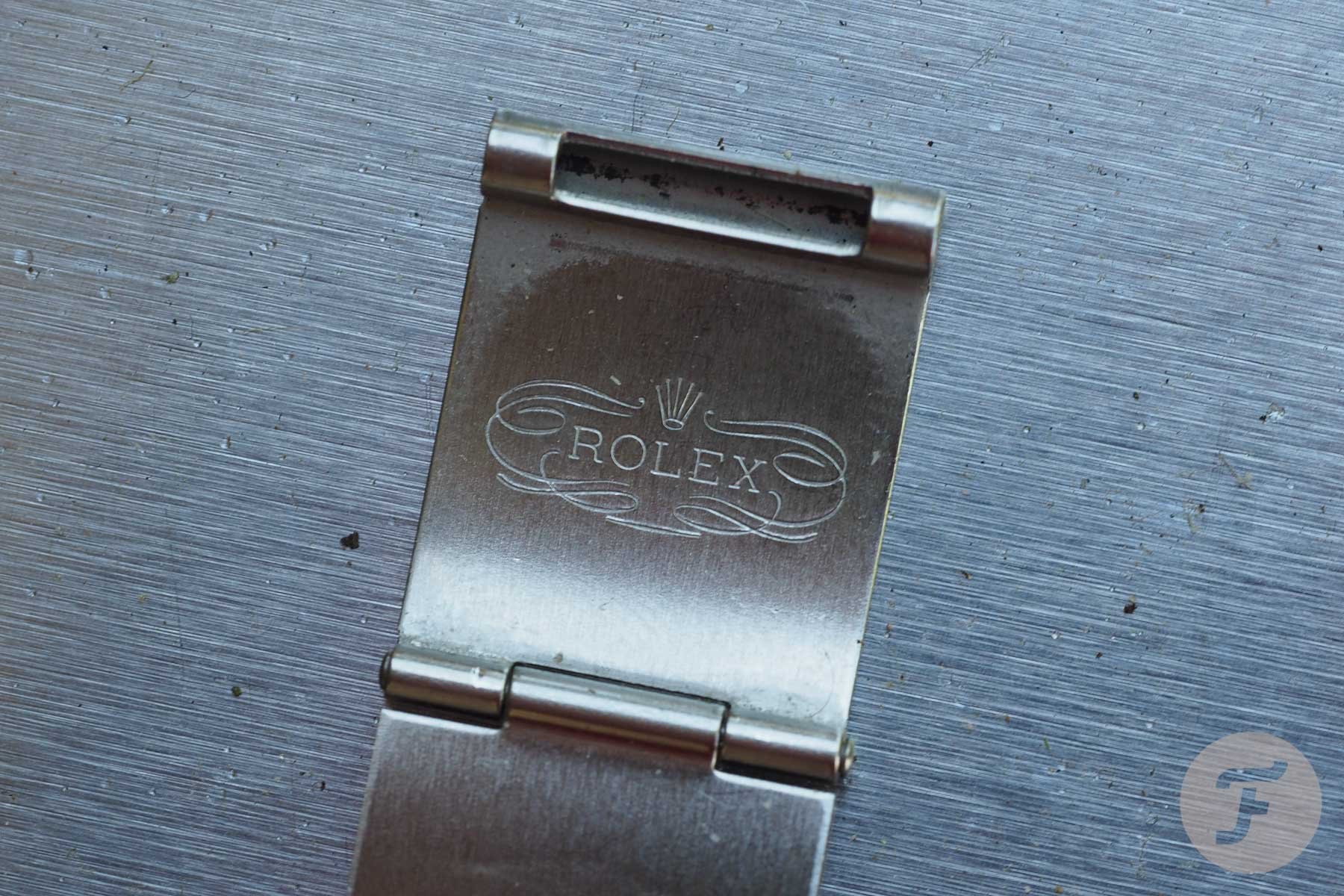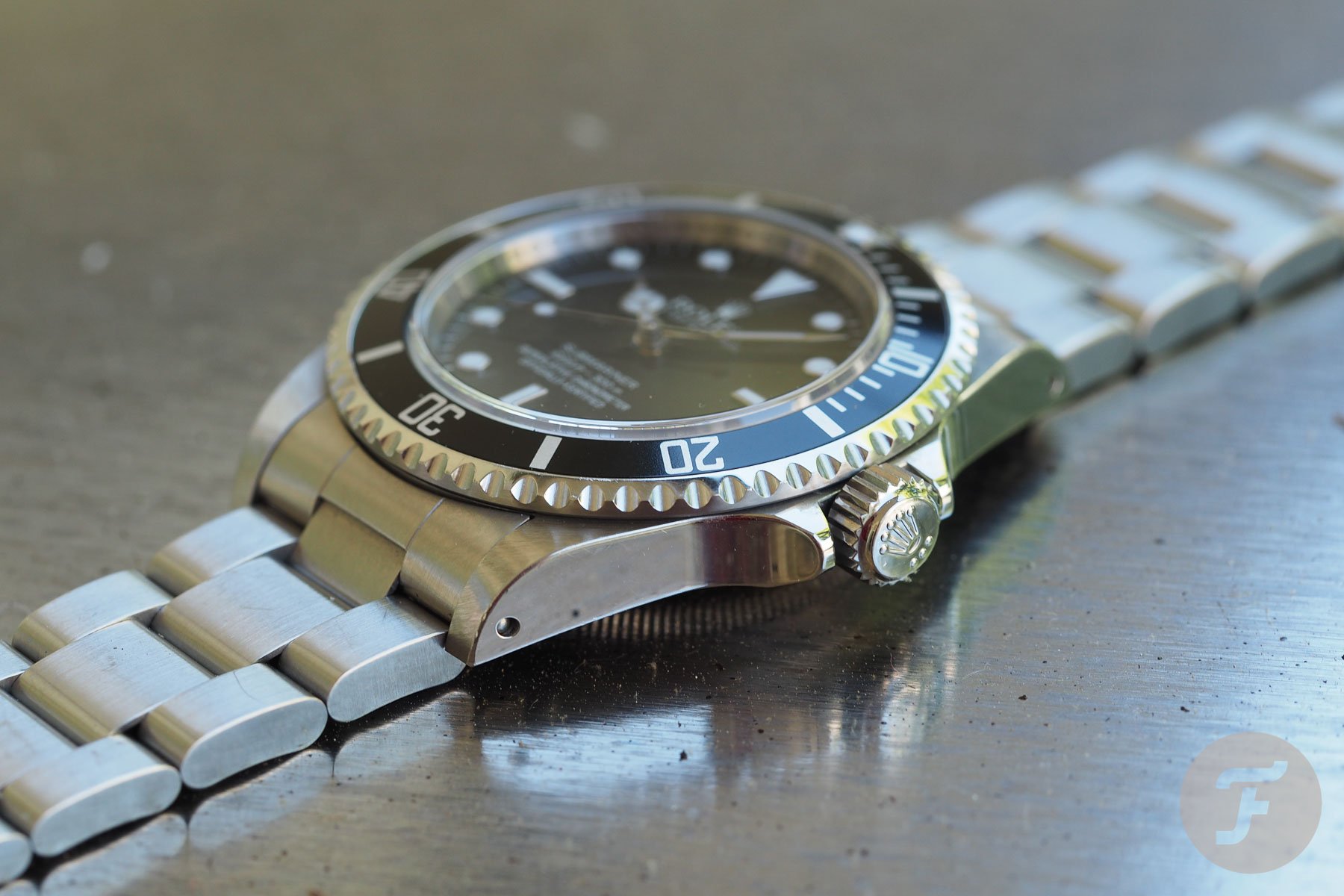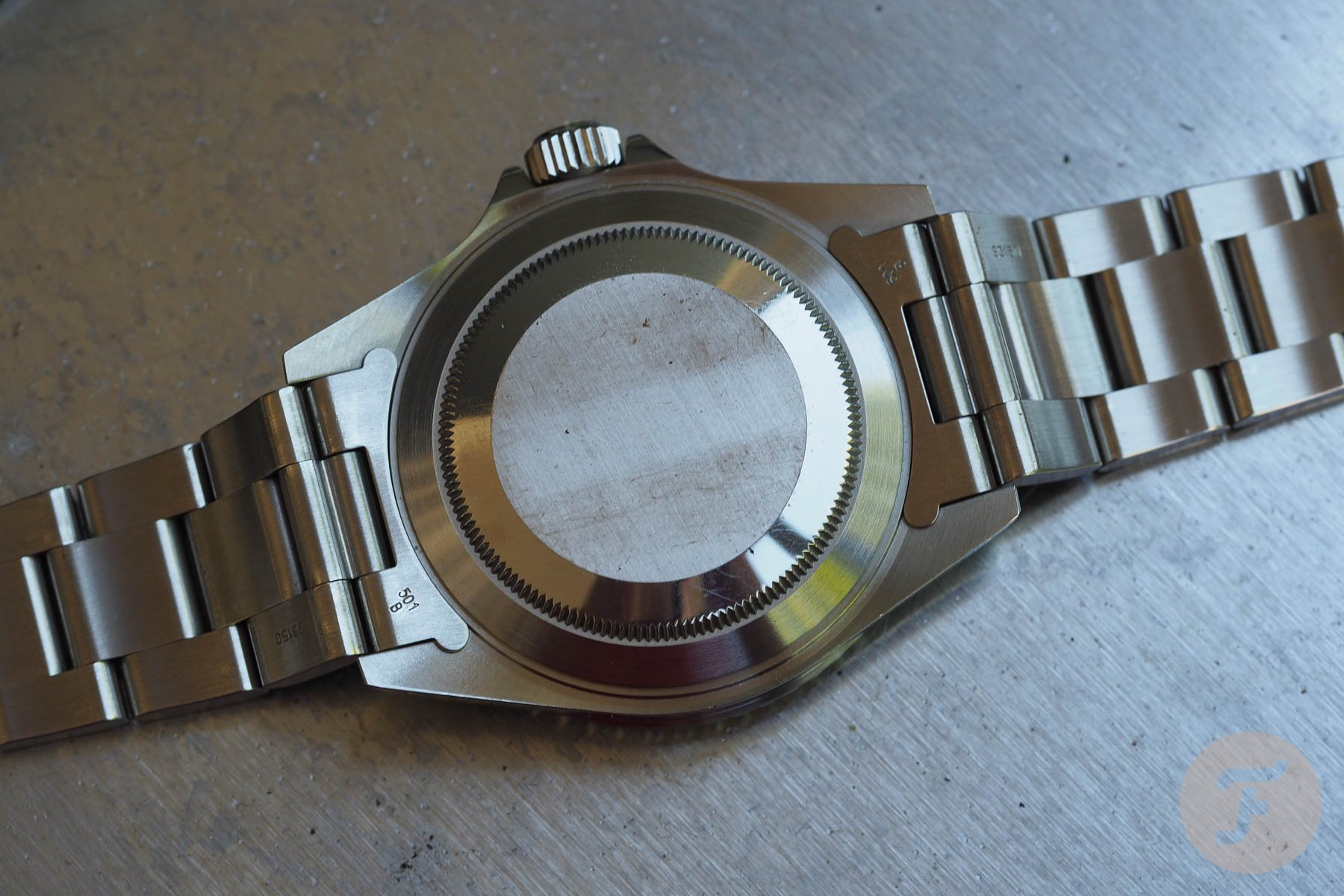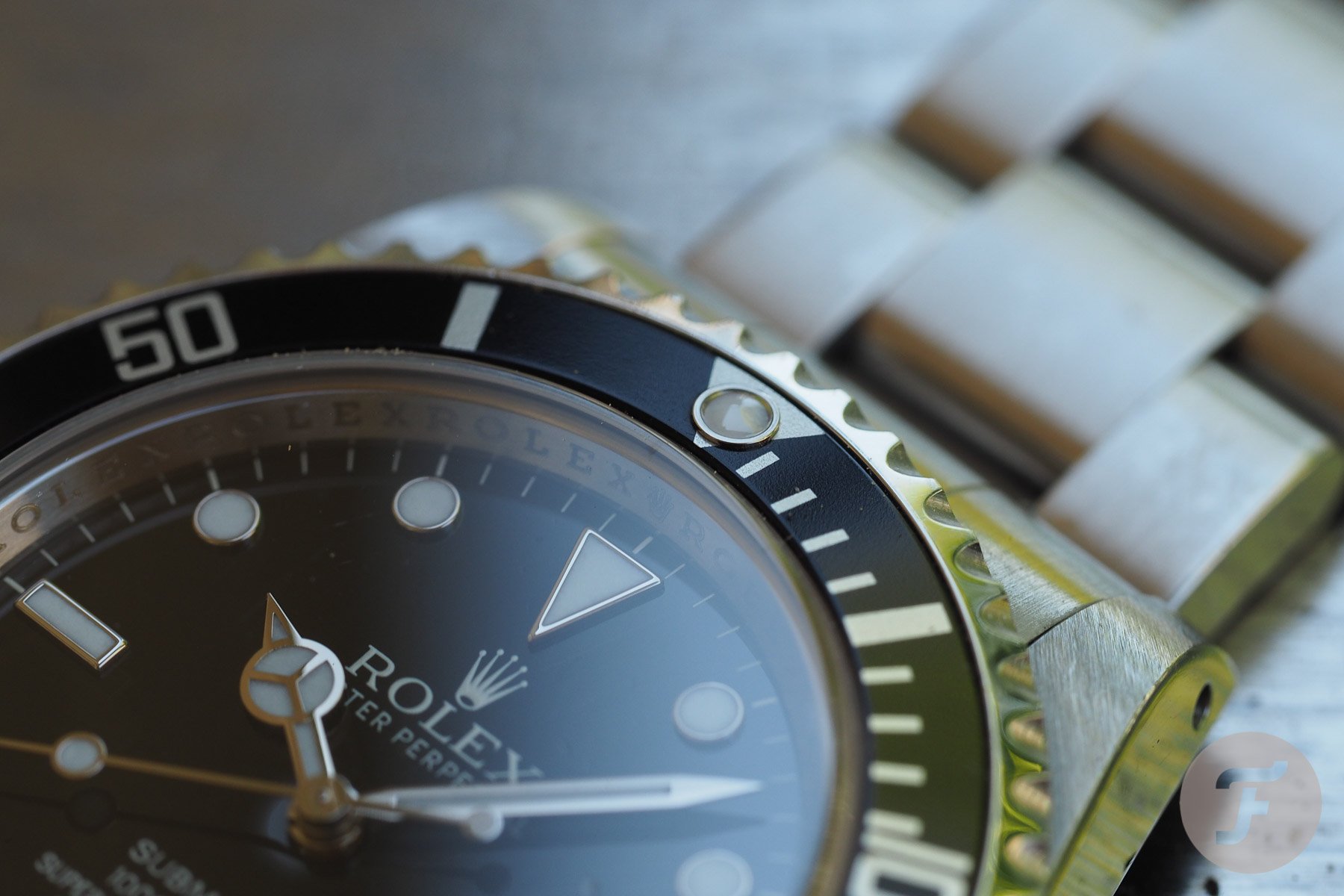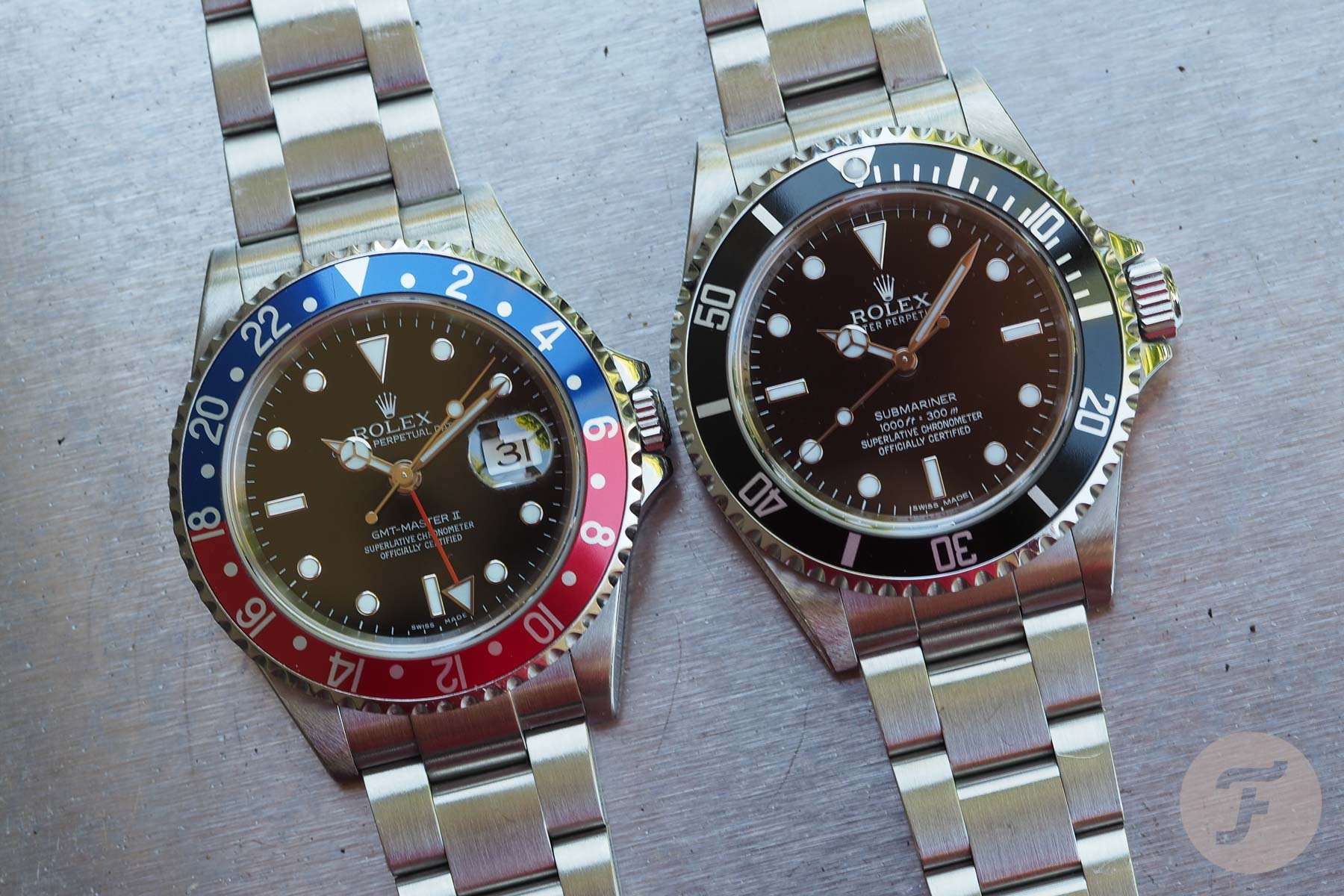Two For Tuesday: Rolex GMT 16710 Vs Submariner 14060M
Welcome to our newest series, Two For Tuesday. Today, we’ll pit two of the watch world’s most popular watches against each other in a tussle to be Tuesday’s-top-dog. It’s the Rolex GMT 16710 vs the Submariner 14060M.
Yes, Two For Tuesday is a new concept for us, but it came to mind when we were “spitballing” about new directions for the site. As the resident watch geek amongst my friends and colleagues, I’m usually their first stop for advice. Oftentimes, people don’t ask about a specific watch. They actually ask about a brand. Someone will say something like, “I want an Omega.” Or, “I want a Rolex.” Amazingly, they’ll often boil it down to two models that are somewhat similar (i.e. both are sporty, both are formal, etc.). So, we’re going to pre-empt some of these discussions by comparing and contrasting two watches that often end up on the same shopping list. And we start with a real doozy of a dust-up between the Rolex GMT 16710 and Submariner 14060M.
Some Background…
I chose the Rolex GMT 16710 and Submariner 14060M references for a couple of reasons. Firstly, both references exist as the final expressions within their model lines of what I’d call “old Rolex”. Yes, when these models ended production, they were replaced by newfangled editions with ceramic bezels, non-stamped clasps, and beefier cases and crowns. And because of this, both models before you today have taken off like a spark to kindling in terms of popularity amongst collectors. Now, some of you may raise your hands and ask why I selected a 14060M Submariner instead of a 16610 Date model. Good question! My answer is that I don’t own a 16610. Also, I prefer the simpler sans date model. Shall we get to it?
Why Pair a Submariner and a GMT?
For some reason, the Rolex GMT 16710 and Submariner 14060M go together like peas and carrots. If you know — or knew — little about watches, it would be easy to choose one versus the other based on aesthetics alone. After all, they look incredibly similar. Both of these models check in with a 40mm stainless case in that famous Oyster case shape. Each features a rotating bezel and their dials are even nearly identical. Mercedes hand? Affirmative in both cases. Crown guards? Check. But there are differences in form and function. Understanding these can make all the difference to your decision.
The GMT Master II reference 16710
1954 was a big year for Rolex because it introduced both the GMT Master and the Submariner. Could you imagine such a press release today!? The GMT was intended to help the wearer track multiple time zones. With its rotating 24-hour bezel and additional arrow-tipped hand, the two indicators worked in conjunction to display time elsewhere. The arrow hand rotates at half speed versus the normal hour hand and that makes for a simple, but effective complication. Landing in a foreign country? You could simply rotate the bidirectional bezel to indicate your new location’s time. Or, rotate to show home time and set the hour hand to local time.
…it basically rewrote history.
But in 1983, the first GMT Master II was released as reference 16760. Some know this model as the “fat lady” because caliber 3085 was a chunky unit. The innovation this model brought is one that sticks with us today and that’s an independent hour hand that “jumps” an hour with each crown twist. This makes an adjustment to local time fast and easy. And again, if the wearer wishes, they can turn the bezel to align to the small arrow and show home time. In 1989, the 16710 debuted with the slimmer 3185 caliber and it basically rewrote history.
The GMT 16710 was and still is massively popular. Rolex gave us a choice in the form of three different bezels. We had black, black/red, and blue/red to choose between. And during certain periods, an Oyster or Jubilee could be chosen. Throughout its run until 2007, it saw several little changes. Notably, drilled lug holes left us, and stamped end links transitioned to solid. But overall, the watch remained familiar.
You’re looking at a 2005 F-Series GMT 16710 with “Pepsi” bezel and it’s a watch that I bought in 2012. Amazingly, these watches were seriously prevalent on Chrono24 for about €5,000. I met the seller face-to-face for the transaction and he explained that he was selling the watch to fund a Deepsea Sea-Dweller. That, folks, is a story for a different article. The funny thing is that I bought the GMT because I loved wearing my Submariner so much. Like a typical person who cross-shops both models, I wanted a GMT because it had such a strong family resemblance to the diver. Well, they are similar, but there are some major differences.
The GMT 16710 comes in with the same 40mm case size as the Submariner. I have no idea why some sites call out the GMT with a 39mm case — it’s not true. But the watch is noticeably lighter than a Sub. It’s here that you get an appreciation for the slimmer case back and thinner sapphire crystal. After all, with only 100 meters of water resistance, there’s no need for such bulky reinforcements. And speaking of svelte, the GMT packs a smaller flip-lock bracelet — early models had a simple clasp — that lacks a wetsuit extension and a much smaller Twinlock crown.
In the looks department, the GMT truly shines with its simple bright colors in either Pepsi or Coke guise. It’s nutty how this dash of color creates such a different look. More importantly, because the 16710 predates ceramic, the colors age and change over time. I know some people hate that, but I like how a watch can grow with its owner. And even though I think choosing the black bezel 16710 is a bit boring, the red arrow hand adds just the right level of contrast.
Somehow the Submariner has gained a reputation of the go-anywhere, do-anything watch. I agree that it’s versatile, but there’s simply no doubt that the GMT is the more complete watch. I’ve traveled extensively with both of these pieces and, hands-down, the GMT is the watch to beat. It can handle just about any sporting activity that either I or 99% of people could throw at it. Plus, the multiple time zone function is a complication that you can actually use. I mean seriously, who really cares about a Moon Phase?
I’ve taken the GMT to China, Singapore, and the USA multiple times and it’s always useful. Plus, despite its colorful looks, the watch is also acceptable in any setting. And if I come back to the wearing part, I’ll briefly harp on a point that I always make with these late-model 16710s. The solid end links kind of suck. They add serious lug-to-lug mm to the case and make the watch stiffer. It’s less rattly and classier, but it’s also less forgiving and flexible. That’s something I don’t love after being cooped up on a plane for 13 hours. Otherwise, it’s a fine watch with typical Rolex finishing and quality. Even the lume is great. Still, there’s little doubt that if I had it to do over, I’d buy an early 16710 with stamped end links.
The Rolex Submariner 14060M
The Rolex Submariner is the big kahuna of sports watches. People love the GMT and the Daytona, but if I had to hazard a guess, I’d wager that the Sub is far more popular on a global scale. Today’s 14060M just happens to be the last old school variant of the line and things changed dramatically after its demise.
We mentioned that the Submariner made its way to the market back in 1954 just like the GMT. And since that time, it’s been the gold standard for dive watches. Blame Sean Connery in Dr. No or our decades-long slide into casualness, but the Submariner has somehow risen above all others in popularity and versatility. It’s not classically beautiful, but it kind of is in being the ultimate expression of an industrial product. There’s nothing superfluous on it and yet it has still has style.
That last sentence is kind of an odd thing to say because the Submariner does look a hell of a lot like the GMT. So why does it get all the credit? Is diving more romantic than the thought of jet setting or helming your own aircraft? You’re telling me that Jacques Cousteau is more studly than Chuck Yeager? Again, I don’t know why this is, but the Sub is such an icon that it could probably stand on its own as an international currency. Yes garçon, I’d like four Submariners worth of your finest vintage Bordeaux for my friends and I. Ha!
The Submariner 14060M was the last of its kind because it also contained an aluminum inlay within its unidirectional bezel. But unlike the GMT, Rolex had done very little to its base model steel diver in the years preceding its exit. We’ll never know whether this was the result of an altruistic curmudgeonly soul inside the enigmatic company or if the firm didn’t deem it worthwhile. After all, the Submariner Date was and is far more popular. Whatever the case, the 14060M went out as it came in (in 1999) and that meant non-maxi-dial, stamped end links, Oyster bracelet, massive stamped Fliplock with wetsuit extension, and heavenly drilled lug holes.
This rattly one became mine in late 2011 after a visit to an AD in Louisiana and I’ve never regretted the purchase. It still looks fantastic and, sorry to my 14270 Explorer, I’d say that the 14060M Submariner ranks as my best everyday watch. Nearly 10 years on, it’s aged like Clint Eastwood and that means that it’s gained character and could still kick ass. It’s my #1 grab-and-go watch for travel, going to dinner, hitting the pool or the beach, and whatever else.
And here’s the thing, the Submariner 14060M is undoubtedly less practical than the GMT. But I still like it better. Truth be told, adjusting the GMT jump hour feels a bit cheap, springy, and a little flimsy to me. Unwinding that honking on the Triplock crown on the Sub to set the time feels boss. And hearing the reassuring one-two punch of the big Fliplock is a sign that it’s time to start the day. For a diver with 300 meters of water resistance, the watch wears cleanly and comfortably. Here again, those oft-maligned stamped end links are magic for a smaller wrist like mine and just as good for the bigger folks. And here’s the last point. I like the color on the GMT, but I actually dig the absolute no-nonsense look of a Sub.
Making Your Choice
It’s hard to go wrong with either the Rolex GMT 16710 or Submariner 14060M. They’re both incredible watches that are modern enough to take a relative beating without fear of damaging some outdated movement part or risking water intrusion. They’re incredibly serviceable and, if done right, can be made as good as new. What is concerning is that both of these watches have become extremely expensive. An ok 16710 runs around €8,000 but this will be with some polishing and without boxes and papers. Add €1,000 – 2,000 plus for something minty. A Submariner 14060M is a little more affordable, but “4-liners” like you see here (aka Chronometer Certified) run in the €8,000 range and go up from there if you want an unpolished specimen with box and papers. Whichever you choose, at least take solace that you’re buying something out of production. More importantly, they’re findable, unlike the current models.
At the end of it all, I think you can tell that I am a Submariner 14060M person. The competition isn’t even a tight one for me. But that doesn’t mean that you need to be. Cast your vote in our very first Two For Tuesday poll and let us know which you’d choose. And while you’re at it, tell us why in the comments section.

